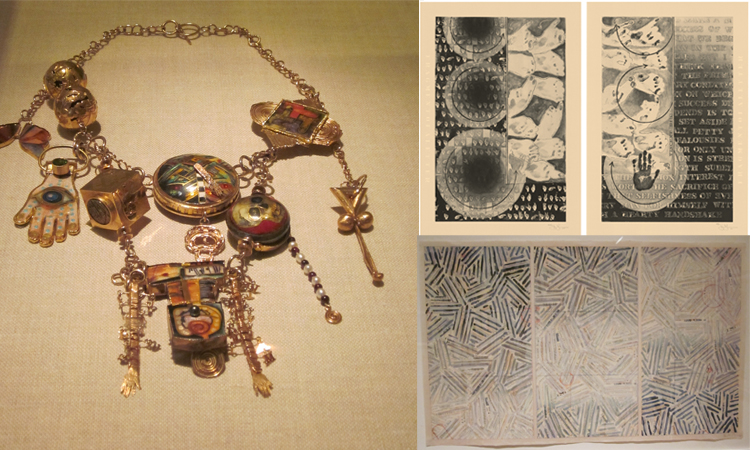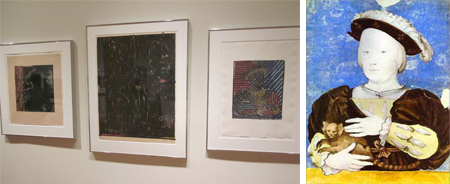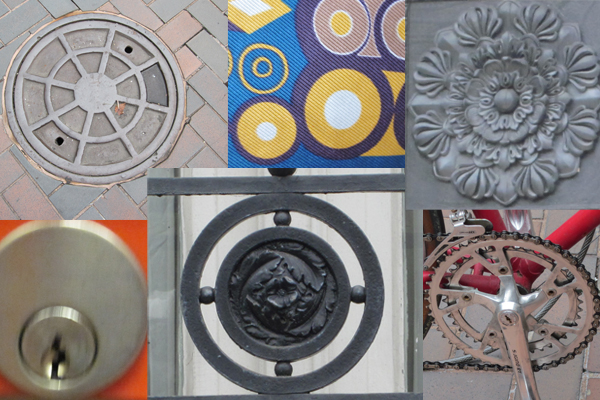
Palms and crosshatching, found in William Harper’s necklace at left, are common themes in Jasper Johns’s work. (left) Nine Tantric Amulets for Jasper Johns by William Harper. Photo: Amy Wike (top right) Jasper Johns, Fragment of a Letter, 2010. Two Intaglios, 44 7/8 x 30 1/2 in. Published by Universal Limited Art Editions. Courtesy ULAE © Jasper Johns and ULAE / Licensed by VAGA, New York, NY (bottom right) Jasper Johns, Usuyuki, 1981. Silkscreen, 29 x 46 3/4 in. Jasper Johns and Simca Print Artists, Inc. John and Maxine Belger Foundation
On a recent trip to the Renwick Gallery, I stumbled upon a piece from its permanent collection titled Nine Tantric Amulets for Jasper Johns by William Harper. The gallery presented no further explanation for the work, and I found myself wondering what the connection to Jasper Johns was for Harper.
The hand, a clear tantric reference, could also be a reference to Johns’s repeated use of palms in his prints. According to the Renwick’s website, the crosshatch pattern at the center of the necklace is a direct reference to Johns. Examples of his affinity for the pattern can be seen in Usuyuki, The Dutch Wives, and the background of Savarin, among other works currently on view in the Phillips exhibition.

(Left) Installation view of Johns’s variations on After Holbein, (right) the portrait by Hans Holbein the Younger on which Johns’s work at left is based.
Harper’s allusion to Jasper Johns perpetuates a common theme among artists of taking cues from art history, as Johns himself makes numerous art historical references in his work—take as one example his variations of After Holbein, based on a tracing of Portrait of a Young Nobleman Holding a Lemur by Hans Holbein the Younger. Generations of artists pay homage to those that came before them, and tracing these tributes makes for a fun, inter-museum scavenger hunt when visiting any city.
Amy Wike, Publicity and Marketing Coordinator




